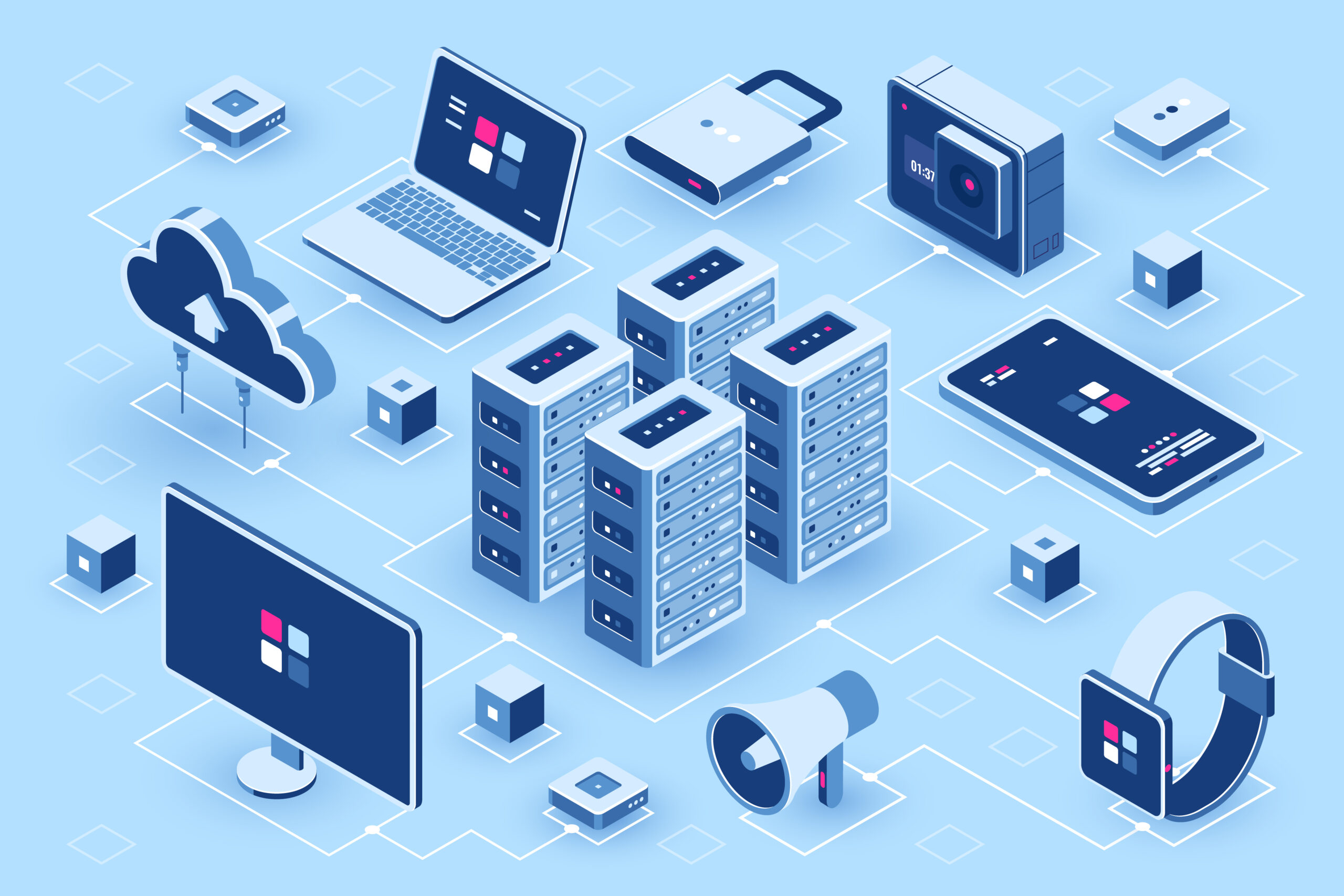Both “deep learning” and “machine learning” are terms that are frequently intermixed in the sphere of artificial intelligence (“AI”). These two fields may appear to be from the same parent but they are hardly cousins by any means. For a newcomer in the realm of AI, the differentiation between deep learning and machine learning is paramount. Determining which of the two is optimal can spell victory or defeat, which is true for business people, developers, or any AI aficionado.
In this article, you will learn the most notable differences, similarities, and most effective applications for machine learning as well as deep learning. You will be able to make more informed decisions regarding your projects that require AI tools by the time you’re done with this article. We will also look at the intersection of these two fields, their usefulness in practice, and the difficulties they pose.
What is Machine Learning?
Prior to comparing deep learning to machine learning, it’s critical to define what machine learning is first.
Understanding ML’s Basics and Concerns
Machine learning (ML) is a type of artificial intelligence that concerns computers that have the ability to learn from data and make decisions without an explicit instruction. Rather than following established guidelines, machine learning models apply algorithms to fix patterns in the data, learn form them, and subsequently make decisions or predictions.
Machine learning may be distilled into three major types:
Supervised Learning: Within this type, the algorithm uses labeled data to learn and make predictions. A common usage model is where a set of images is captured, and these images have labels and, and in the future model will be able to recognize the object in a new image based on the trained datasets.
Unsupervised Learning: In this case, the algorithm had no previous knowledge of the data, thus attempting to discover patterns or categories on its own. Clustering algorithms serve as a good demonstration of this, where data is assigned to groups or clusters based on their similarities, and the two are not labeled.
Reinforcement Learning: In this type of machine learning, an agent learns through performing different actions within an environment, and rewarding or punishing them based on previously taken actions. An example of this is widely present in robotics and in AI games.
Use Cases For Machine Learning In The Real World
Machine learning has a wide range of use cases across multiple industries today, and its implementation scope is increasing for day-to-day activities. Some common real life machine learning applications are:
Email Sorting: Spam filters in your emails use machine learning in order to determine whether a message is important or not, or whether it can be thrown to junk based on learned patterns.
Suggestion Systems: similar to Netflix and Amazon. These services use machine learning to analyze your preferences and usage patterns so they can suggest suitable movies, products, and music.
Insurance: Machine learning algorithms are capable of analyzing medical information, predicting upcoming diseases, suggesting treatments, and even assisting in medical imaging.
Deep Learning Explained
This is another portion of Artificial Intelligence, which, however, is more sophisticated and intricate regarding machine learning techniques.
Deep Learning Summary and Explanation
Deep learning uses neural networks that learn patterns in the data that is fed to them through a sequence of layers (hence “deep” learning). The structure of human brains has layers of connected nodes – also known as “neurons” – that process information. Because of this, networks received inspiration with the aim of advancing AI. When deep learning networks are described as deep, the number of layers in the model is the intended meaning.
Because of the significant pre-processing of data it does, deep learning is becoming a very option for many to consider when tackling problems like image, audio, or text data mining. Traditional machine learning approaches needed manual feature addition, but multi layer perceptrons were able to do this automatically using the data present to them.
Understanding the Mechanism Behind Deep Learning
Data is processed in layers within a deep learning model. Each layer will learn features from the data input at an increasingly high level of abstraction. For example, let’s consider an image classification problem. The first layer might recognize edges; the second one recognizes the shapes, while the higher layers will be able to recognize faces or cars.
Most of the time, deep learning models require powerful computers and a huge supply of labeled data. They also adjust their weights so that they minimize the error by using techniques like backpropagation and trying to learn from their previous mistakes.
Deep Learning’s Real-Life Use Cases
Deep learning has transformed a number of sectors, particularly those that work with big and complex data. Take a look at some of the frequently used ones:
Image and Speech Recognition: Deep learning is at the top of its game in complicated pattern identification tasks like facial recognition or voice to text conversion.
Natural Language Processing (NLP): Deep learning models such as GPT 3 are used with chat bots, in translation of languages, or in detecting sentiments as it is done in this article.
Self Driving Vehicles: Self-driving cars are facilitated with deep learning to manage and act with visual data obtained from cameras, sensors, and radars.
Difference Between Deep Learning and Machine Learning
Now that we have Q’s marked out, let’s analyse the important differentiators between deep learning and machine learning.
Level of Difficulty and Structure
In my view, one extremely major difference between deep machine learning and traditional machine learning is architecture of the two terms. Models of machine learning, especially the older ones such as linear regression or decision trees, require less processing power and resources. The primary focus is on building a model that incorporates data features created by human specialists to predict results through trained processes.
On the other hand, deep learning uses multi-layered neural networks (that’s why its called deep learning).These structures are much more sophisticated and complex, and can process unprocessed data without any manual feature selection. Consequently, these models can handle more complex patterns and require significantly more computation.
Depth of work through the data and training
Deep machine learning models usually require bigger data sets, while machines work more efficiently with smaller datasets. The secret is to provide the required data in high quantity and quality while making it easy for the model to make guesses.
On the contrary, deep learning models perform best given a large volume of information. Data requirements increase in volume alongside the difficulty of tasks; which results in a meaningful improvement in analyzing images and recognizing speech. But they tend to be more sensitive to errors as one performs poorly in adjusting the parameters, which makes sufficient data essential.
Compiling Resources: Machine Learning Vs. Deep Learning
While deep learning models demand powerful GPUs and infrastructure to process large volumes of data, machine learning models will usually only need a common laptop or server. Depending on the intricacy and the size of the dataset, training a deep learning model can differ in time, taking hours or days.
Where to apply: Use Cases of Machine Learning and Deep Learning
Deep learning sensitive applications, such as image processing and self-driving cars, benefit deeply neural networks, while simpler tasks like churn prediction in telecom or maintenance in manufacturing can still be solved efficiently using machine learning.
Remember to always tailor the approach to the scope of the task at hand.
Is Deep Learning a Branch of Machine Learning?
Deep learning techniques are a core component of machine learning which in turn is a specific subset of artificial intelligence. That being said, it is necessary to place both concepts within their appropriate contexts.
The classification of machine learning into deep learning and its further subdivisions are solely dependent on the nature and the amount of data that is available. In short, deep learning is an intricately structured, sharper form of machine learning, specifically crafted for dealing with exceptionally difficult challenges where traditional machine learning techniques fall short.
Assumptions That Are Incorrect Regarding Deep Learning And Machine Learning
Misconceptions often accompany any relatively new field emerging in technology and so deeply entangled are the branches of machine learning and deep learning. Here’s some of them:
Myth 1: Deep Learning Is More Advanced Than Traditional Machine Learning So It Performs Better, Always.
Although powerful, deep learning shall not be the go to option always. More simplistic problems or tasks where the amount of data is limited can still be solved using other traditional techniques in a set amount of time with less or no processing power.
Myth 2: Less Data is Needed for Machine Learning Than Deep Learning
It is a known fact that more data is needed for deep learning as opposed to machine learning. However, it must be said that machine learning benefits from having a large dataset as well. The main distinction is that a lot of machine learning models tend to perform quite well with smaller datasets, given that they are well optimized.
Myth 3: Human’s Intervention is Unnecessary in Deep Learning
True, many in the field argue that deep learning models require lesser feature engineering than other types of machine learning, but human supervision is still crucial during training, validation, and tuning. In addition, deep learning models need a lot of high-quality data to perform well, which adds to the supervision required.
Also Read: Top 10 Tech Innovations
Future of Deep Learning and Machine Learning
The continuous advancement of AI technologies guarantees that both deep and machine learning will become even more popular in various industries. The combination of these fields and creation of hybrids will enable breakthroughs in medicine, finance, self-driving cars, and other industries alike.
Machine learning will still be implemented for problems of lower complexity with lesser amounts of data, while deep learning will take on an increasingly prominent role in the analysis of significant unstructured data such as videos and texts.
Commonly Asked Questions (FAQs)
What’s the primary distinction between machine learning and deep learning?
The complexity and architecture define the primary distinction. Machine learning involves simpler models that require human-engineered features, whereas deep learning uses complex models that utilize neural networks to automatically extract features from vast amounts of data.
Do you need a lot of data for deep learning?
Of course deep learning requires a large set of data. The performance of deep learning models improves significantly with the quality and volume of data provided.
Is deep learning always more accurate than machine learning?
Not necessarily. Usually, deep learning works more accurately within the realms of tasks with big datasets, while deep learning outshines in less complex chores, or when data is scarce, traditional machine learning methods can surpass deep learning.
Conclusion: Making the right choice for your AI projects.
To summarize, the decision to utilize deep learning or machine learning should be directed by what problem you are attempting to solve. Both have their strong points and uses, but knowing what sets them apart will enable you to use them properly.
By keeping tabs on the advancements in both fields, you will maintain a competitive edge as AI develops. For beginners, I recommend trying out machine learning before progressing to deep learning as your data and requirements expand.












